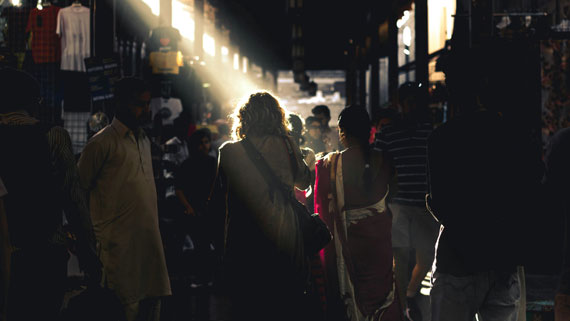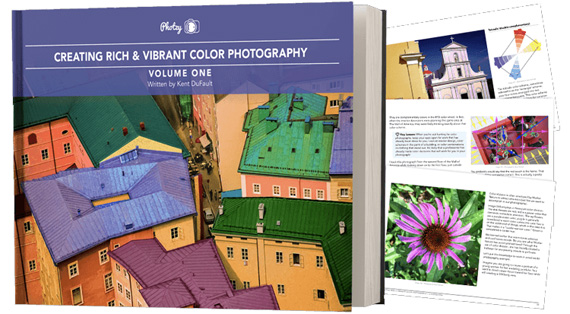Understanding the relationship between color and light is fundamental to mastering photography. Light is the medium through which we perceive color, and the interplay between the two can dramatically affect the mood, tone, and composition of a photograph. In this post, we’ll delve into the science behind color and light, how they interact, and how photographers can harness this relationship to create stunning images.
Related note: only a little while left for the Rich & Vibrant Color Photo Guide at 71% Off

Photo captured by Yuan Thirdy; 50mm, f/2.5, 1/320s, ISO 200
The Science of Color and Light
At its core, color is the result of light interacting with objects and our eyes. Light is composed of electromagnetic waves, which vary in wavelength. When light strikes an object, it can be absorbed, reflected, or transmitted. The specific wavelengths that are reflected determine the color we perceive. For instance, an apple appears red because it reflects red wavelengths and absorbs others.
White light, like sunlight, contains all visible wavelengths. When it passes through a prism or raindrop, it disperses into a spectrum of colors, revealing the full range of visible light from red to violet. This phenomenon is known as dispersion and is a key concept in understanding color.
Color Temperature and Photography
Color temperature refers to the hue of light emitted by a light source and is measured in Kelvin (K). Different light sources have different color temperatures, which can dramatically alter the appearance of a photograph.
- Warm light (around 2000K-3000K) appears more orange or yellow and is typical of sunrise, sunset, and tungsten bulbs.
- Cool light (above 5000K) appears more blue and is common in midday sunlight and overcast conditions.
Photographers use color temperature to set the white balance in their cameras, ensuring that colors appear natural and consistent regardless of the lighting conditions.
The Role of Light in Photography
Light is the essence of photography. The word “photography” itself means “drawing with light.” Here are a few ways light influences photography:
- Exposure: The amount of light that reaches the camera sensor determines the exposure of an image. Proper exposure ensures that details are visible in both the highlights and shadows.
- Contrast: Light creates contrast by casting shadows and highlights, adding depth and dimension to a photograph.
- Mood: The quality and direction of light can set the mood of a photograph. Soft, diffused light creates a gentle, flattering effect, while harsh, direct light can evoke drama and intensity.
- Color Casts: Different light sources can introduce color casts to a photo. For example, fluorescent lighting can produce a greenish tint, while incandescent lighting can add a warm, orange hue.
Using Color and Light Creatively
Photographers can manipulate color and light to enhance their images and convey specific emotions or messages. Here are a few techniques:
- Golden Hour: The period shortly after sunrise and before sunset, known as the golden hour, provides soft, warm light that is ideal for capturing portraits and landscapes.
- Blue Hour: The time just before sunrise and after sunset, called the blue hour, offers cool, twilight hues that can create a serene and mystical atmosphere.
- Color Filters: Using color filters or gels can alter the color balance of a scene, adding creative effects or correcting unwanted color casts.
- Artificial Lighting: Studio lights, flash, and continuous lighting allow photographers to control the intensity, direction, and color of light, providing endless creative possibilities.
Summary:
The relationship between color and light is a cornerstone of photography. By understanding how light affects color and how different lighting conditions can alter the appearance of a photograph, photographers can make informed decisions about exposure, composition, and mood. Whether you’re shooting in natural light or a controlled studio environment, mastering the interplay of color and light will elevate your photography to new heights.
For Further Training:
It’s a photographer’s secret weapon! Color photography can actually change the emotional state of a person viewing a particular photograph. In this in-depth eBook, you’ll uncover the true ‘story’ behind memorable, fascinating, & impressive color photography. It is currently 71% off for a limited time if you want to check it out.
Properly executed – color photography can influence a viewer in a subconscious, ingenious, and an undeniably amazing way. It’s fun to learn by doing. This 165 pages practical guide is packed with Assignments, Key Lessons, and Self-Check Quizzes.
Deal ending soon: The Rich & Vibrant Color Photography Guide at 71% Off
- - - - - - - - - - - - - - - - - - - - - - - - - - - - - - - - - - - - - - - - - - - - - - - - - - - - - - - - - - - - - - - - - - - - - - - - - -
Photography, like any art or skill, thrives on consistency. The journey to becoming an adept photographer is paved with regular practice. Learn how PictureCorrect Insiders can help.
- - - - - - - - - - - - - - - - - - - - - - - - - - - - - - - - - - - - - - - - - - - - - - - - - - - - - - - - - - - - - - - - - - - - - - - - - -
This post The Relationship Between Color and Light in Photography appeared on PictureCorrect.
from PictureCorrect https://ift.tt/G4kpZvR
via IFTTT







0 kommenttia:
Lähetä kommentti